5G’s RF signals and data rates have brought on the development of new liquid crystal polymer materials used in connectors, PCBs, and other interconnects to minimize signal losses.
Liquid crystal polymers (LCPs) are experiencing a surge in demand resulting from 5G electronics applications, particularly fine-pitch components such as high-frequency connectors, board-to-board connectors, and low-pass insulation supporters, or dipoles on active antenna units (AAU).
Liquid crystal polymers occupy a special category of material between an ordinary solid and a liquid. Their chemical structures consist of wholly aromatic building blocks, but they differ from other aromatic polymers. Their rigid molecular backbones exhibit unique physical, mechanical, rheological and thermal properties. These materials also display specialized flow behavior in that their viscosity decreases dramatically once the processing temperature reaches the liquid crystalline transition temperature point. Further, LCPs are very sensitive to shear force, indicating that the polymer is highly oriented in the direction of shear.
Thermotropic LCP materials, which exhibit liquid crystal characteristics after melting at a high temperature, differ from lyotropic LCPs, which display these characteristics after being dissolved in a solvent. This article focuses on thermotropic LCPs.
New applications
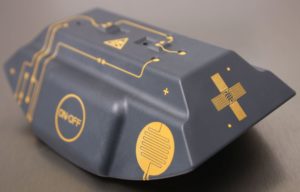
Figure 1. A 3D molded interconnect device (MID), made by Cicor Group with SABIC’s LNP THERMOCOMP compounds is one of many components made possible with liquid crystal polymers. Others include connectors and PCB materials.
Although LCPs are not a new material family, they are currently in the spotlight because their properties align with the elevated requirements of 5G electronics applications. To achieve very high speeds of 2 Gb/sec 5G signals are transmitted at higher frequencies (1 GHz to 39 GHz) with bandwidths up to in 100 MHz. Under these conditions, signal transmission is significantly impacted by dielectric constant (Dk) — in the power of half — and dissipation factor (Df) in the power of one. Thus, materials with very small Df values are essential to reduce signal transmission loss. Liquid crystal polymers are well known for low, stable Dk and Df properties due to their symmetrical, rigid and relatively low-polarity chemical structures.
Good dielectric performance is not the only material requirement for 5G electronics applications. To handle higher data loads, higher frequencies and faster speeds, printed circuit boards (PCBs) for 5G infrastructure – such as base stations, servers, and antennas – are being redesigned and reimagined with new materials. These new PCB designs may feature flexible substrates that require less space. To accommodate more functionality on the board, components are growing smaller, with thinner walls that require high-flow materials offering good dimensional stability. Thermal management is becoming more critical due to the additional heat generated by closely packed components, and higher heat resistance is necessary to withstand temperatures of 260ºC to 280ºC from lead-free soldering used in surface mount technology (SMT).
In exterior 5G applications such as small cells, base stations and antennas, PCBs are subjected to harsh environmental exposures. Moisture uptake in polymers used for board-mounted components can negatively affect their dielectric properties.
Thermotropic LCP attributes address all of these challenges. These materials offer high flow (10 to 100 times better than that of other polymers) for molding fine-pitch electronic components for PCBs. Higher flow enables molders to reduce cycle times for filling complex geometries.
Compared to semi-crystalline polymers, LCPs offer better dimensional stability, which helps to improve design precision and soldering accuracy in PCB applications. This is because semi-crystalline materials like polyether ether ketone (PEEK) and polyphthalamide (PPA) experience post-crystallization in the temperature range between their glass transition temperature (Tg) and their crystallization temperature (Tc), during which their polymer chains are rearranged. Due to this rearrangement, parts molded from semi-crystalline materials risk deformation such as warpage or even cracking. Post-crystallization behavior is quite complex, as it is dependent on crystallization kinetics and processing conditions. These issues can be eliminated with LCPs. Due to their liquid crystalline behavior, their structure and morphology remain unchanged between solid and liquid states.
Another advantage of LCPs is their high heat resistance, which is much higher than that of other polymers. Normally, the heat deflection temperature of neat LCP resins can reach 240ºC to 280ºC, but it increases to 260ºC to 320ºC for LCP compounds reinforced with glass fiber or special minerals.
Low water absorption is also an important property of LCPs whose tightly packed crystalline structure provides very little space for moisture. Other plastics, such as polyesters, absorb water readily, and this degrades their dielectric properties. In contrast, the low Dk and Df performance of LCPs does not change with exposure to moisture, making them desirable for exterior applications such as AAUs. For example, under dry conditions, LCPs and semi-crystalline polymers such as PPA have similar water absorption levels (0.006%-0.01% for LCPs vs. 0.1% for PPA), but after exposure to rain or other heavy moisture, PPA’s absorption percentage may rise to 0.3%.
New-generation materials
To meet the increasingly stringent requirements of 5G electronics, as well as demanding applications in consumer electronics and smart appliances, suppliers are developing the next generation of LCPs. These materials may offer higher flow for ultra-thin-wall (0.2 mm – 0.1 mm) components, a finely tuned balance between stiffness and ductility, control over blistering that can occur during lead-free soldering, and extremely low warpage. Other new materials may deliver extra-low Dk performance or provide very high thermal conductivity to allow efficient heat dissipation from high-powered devices and semiconductors for mass data transfer applications.
Another enhancement to LCPs is the incorporation of laser direct structuring (LDS) functionality, a leading process in 3D molded interconnect device (MID) technology (Figure 1), to provide solutions for applications such as multiple LDS antennas with PCB welding. The 3D shape of these devices allows tighter integration of electrical components into the available space.
The global adoption of 5G networking has opened new opportunities for LCPs and is spurring development of higher-performing grades of these materials. By replacing traditional semi-crystalline polymers with LCPs, manufacturers can achieve the exceptional performance properties necessary for smaller, more complex designs, higher-temperature manufacturing, and reliable deployment and operation of advanced electronics for 5G infrastructure and devices.

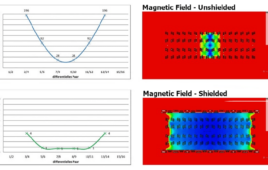
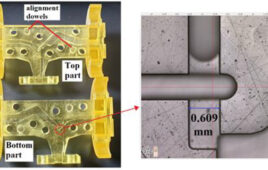
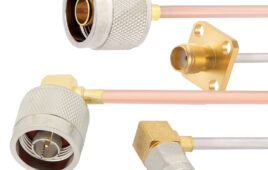
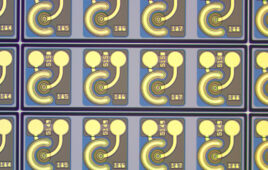
Tell Us What You Think!